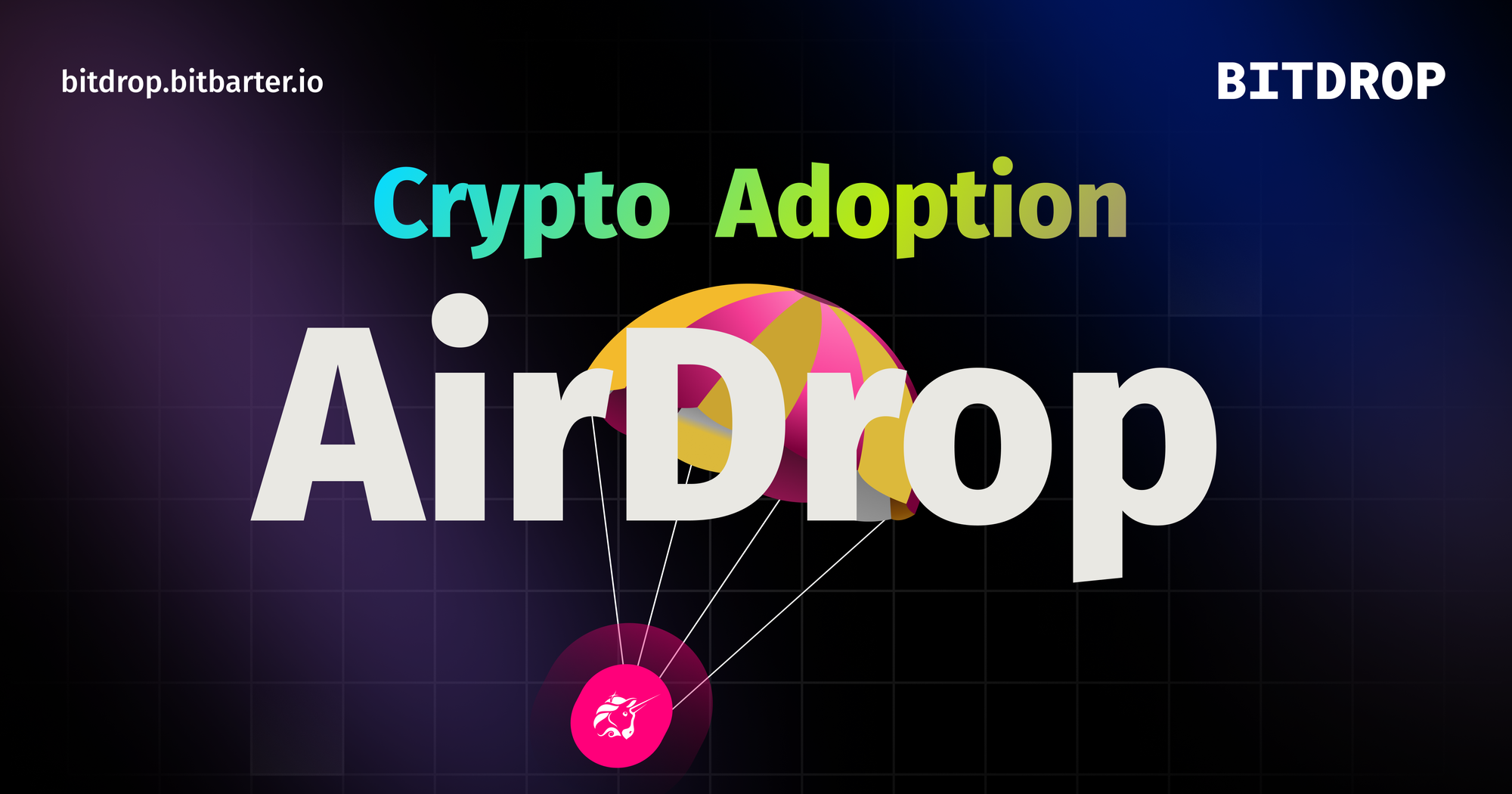The Role of Airdrops in Fueling Cryptocurrency Adoption Growth

Cryptocurrency adoption has seen exponential growth over the past decade, driven by various factors including technological advancements, increased public awareness, and the proliferation of blockchain projects. Among these catalysts, airdrops have played a pivotal role in promoting widespread crypto adoption. This article explores how airdrops have contributed to the growth of the cryptocurrency ecosystem and why they are an effective strategy for blockchain projects.
To find airdrops visit: https:bitdrop.bitbarter.io
What is an Airdrop?
An airdrop is a distribution of a cryptocurrency token or coin, usually for free, to a large number of wallet addresses. Airdrops are often conducted by blockchain-based projects to bootstrap their user base, reward loyal community members, or as part of a marketing strategy to create buzz and engagement around their project.
Airdrops as a Catalyst for Crypto Adoption
1. Increased User Base and Engagement
Airdrops are an effective way to rapidly increase the user base of a new cryptocurrency project. By distributing tokens for free, projects can attract a large number of users who are interested in receiving free assets. This not only increases the number of holders but also boosts engagement as users are more likely to participate in the project's ecosystem, whether by trading, staking, or using the tokens within decentralized applications (dApps).
2. Enhanced Awareness and Visibility
One of the primary challenges for any new cryptocurrency project is gaining visibility in a crowded market. Airdrops generate significant attention and media coverage, helping projects stand out. The excitement around receiving free tokens often leads to increased social media activity, word-of-mouth promotion, and community discussions, all of which contribute to higher visibility and awareness.
3. Community Building and Loyalty
Airdrops can help foster a sense of community and loyalty among early adopters. By rewarding users with tokens, projects can build a dedicated and supportive community that is invested in the project's success. This community can become valuable advocates, promoting the project and providing feedback that can guide future development.
4. Lower Barrier to Entry
Airdrops lower the barrier to entry for individuals who are new to cryptocurrencies. Receiving free tokens allows users to experiment with blockchain technology without the risk of financial loss. This hands-on experience can demystify the complexities of cryptocurrencies, making them more accessible to a broader audience.
5. Incentivizing Participation and Usage
Airdrops can be structured to incentivize specific actions such as signing up for a platform, referring friends, or participating in governance. By aligning incentives with desired behaviors, projects can drive user participation and engagement, leading to a more vibrant and active ecosystem.
Case Studies of Successful Airdrops
1. Uniswap (UNI)
In September 2020, Uniswap, a leading decentralized exchange, conducted an airdrop of its governance token UNI. Each user who had interacted with the platform before a specific date received 400 UNI tokens, which were worth thousands of dollars at the time. This airdrop not only rewarded loyal users but also increased awareness and participation in Uniswap's governance processes.
2. Stellar (XLM)
Stellar, a blockchain project focused on cross-border payments, has conducted several airdrops to promote its platform. By partnering with platforms like Blockchain.com, Stellar distributed millions of XLM tokens to wallet holders, significantly increasing its user base and driving adoption of its network.
The Future of Airdrops in Crypto Adoption
As the cryptocurrency market continues to evolve, airdrops are likely to remain a popular strategy for driving adoption. However, projects must navigate regulatory challenges and ensure that their airdrop campaigns are compliant with local laws. Additionally, with increasing competition, projects will need to design more innovative and engaging airdrop campaigns to capture user interest.
Conclusion
Airdrops have proven to be a powerful tool for promoting cryptocurrency adoption. By increasing user engagement, enhancing visibility, building community, lowering entry barriers, and incentivizing participation, airdrops have helped numerous blockchain projects achieve significant growth. As the crypto ecosystem continues to expand, airdrops will undoubtedly play a crucial role in bringing more users into the fold and driving the adoption of decentralized technologies.